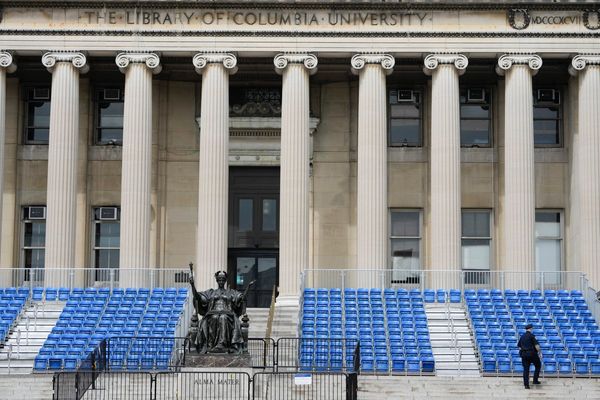Divers have documented evidence of what conservationists say is widespread coral bleaching at the Ningaloo Reef off Western Australia’s north-west coast.
Photographs show bleaching at several sites along the 260km-long reef, including Turquoise Bay, Coral Bay, Tantabiddi and Bundegi (Exmouth Gulf).
Waters off WA have been affected by a prolonged marine heatwave since September, with ocean temperatures 1.5C higher than average over a five-month period.
Paul Gamblin, the WA director of the Australian Marine Conservation Society, described the bleaching event as a “red-alert moment for Ningaloo”.
“Bleaching at Ningaloo is not normal. It demands urgent action from government, not business as usual. Large areas of coral could die in the weeks ahead,” Gamblin said.
“In addition to Ningaloo, we also need to urgently know the status of bleaching at WA’s spectacular offshore coral reefs, including Scott Reef and the Rowley Shoals,” Gamblin added.
“We know that many people in Exmouth are distressed by what they are witnessing. It’s also a stark reminder that coastal communities and their businesses, including the fishing industry and Ningaloo’s world-renowned tourism industry, rely on a healthy marine environment, and climate change poses an existential threat to them.”
Videographer Andre Rerekura, who documented some of the coral bleaching at Ningaloo, described the event as “truly devastating”.
“I know what a thriving, healthy reef should look like. So to submerge beneath the surface and be met with an expanse of bleached coral stretching as far as the eye can see is a heartbreaking reality. It’s a stark reminder of how fragile these ecosystems are.”
Ningaloo last bleached in 2022. With increased global heating, coral bleaching will become more common, with rapid successive events eventually killing off reefs as it takes about a decade for corals to recover in the absence of new threats.
Coral bleaching describes a process whereby the coral animal expels the algae that live in its tissues and give it its colour and much of its nutrients.
Without its algae, a coral’s white skeleton can be seen through its translucent flesh, giving off a bleached appearance.
Mass coral bleaching over large areas, first noticed in the 1980s around the Caribbean, is caused by rising ocean temperatures.
Some corals also display fluorescent colours under stress when they release a pigment that filters light. Sunlight also plays a role in triggering bleaching.
Corals can survive bleaching if temperatures are not too extreme or prolonged. But extreme marine heatwaves can kill corals outright.
Coral bleaching can also have sub-lethal effects, including increased susceptibility to disease and reduced rates of growth and reproduction.
Scientists say the gaps between bleaching events are becoming too short to allow reefs to recover.
Coral reefs are considered one of the planet’s ecosystems most at risk from global heating. Reefs support fisheries that feed hundreds of millions of people, as well as supporting major tourism industries.
The world’s biggest coral reef system – Australia’s Great Barrier Reef – has suffered seven mass bleaching events since 1998, of which five were in the past decade.
Mia Pepper, the campaigns director at the Conservation Council of WA, described the latest bleaching event as “an entirely avoidable tragedy”.
“This coral bleaching emergency at Ningaloo comes weeks after similar bleaching in the Kimberley and is a direct result of an extreme marine heatwave off our north-west coast,” she said.
In January, about 30,000 fish died and washed up along the Pilbara coast, which authorities attributed to “prolonged thermal stress” from the ongoing heatwave.
Research earlier this month found that such marine heatwaves were up to 100 times more likely to occur because of climate change. Almost 90% of marine heatwaves are already attributable to human-caused global heating, and the events are expected to increase in frequency, intensity and duration with rising fossil fuel emissions.
“The same extreme marine heatwave has also contributed to two intense tropical cyclones in less than a month battering WA’s Pilbara,” Pepper said. “WA’s emissions continue to rise and the WA government continues to approve and expand gas production, flying in the face of climate science and warnings.
“It’s critical that the next WA state government phases out fossil fuels and passes laws to limit climate pollution – to do otherwise risks the lives and livelihoods of West Australians and future generations.”







